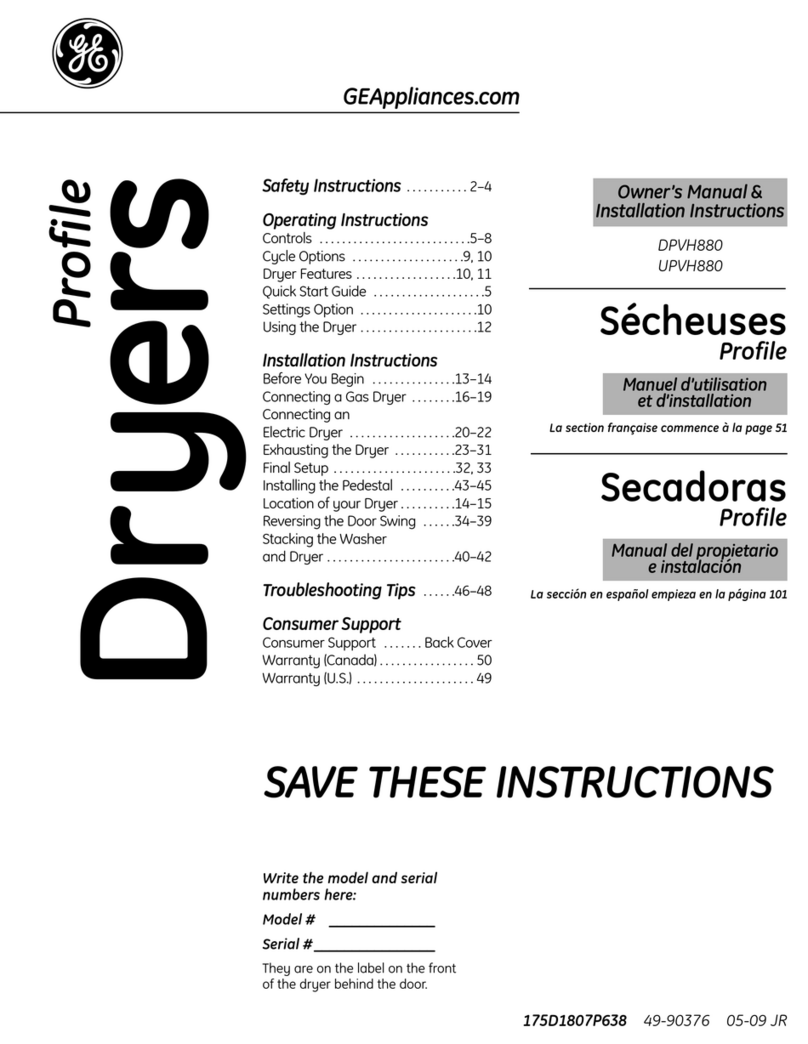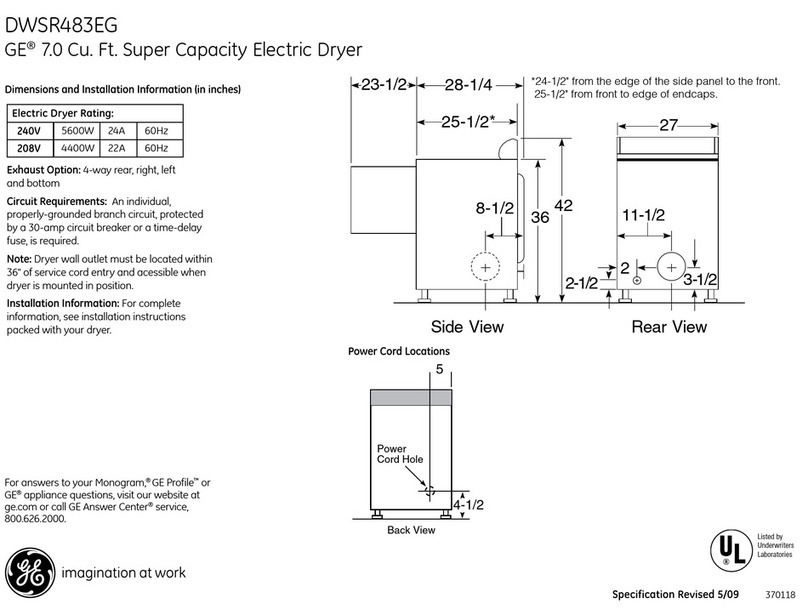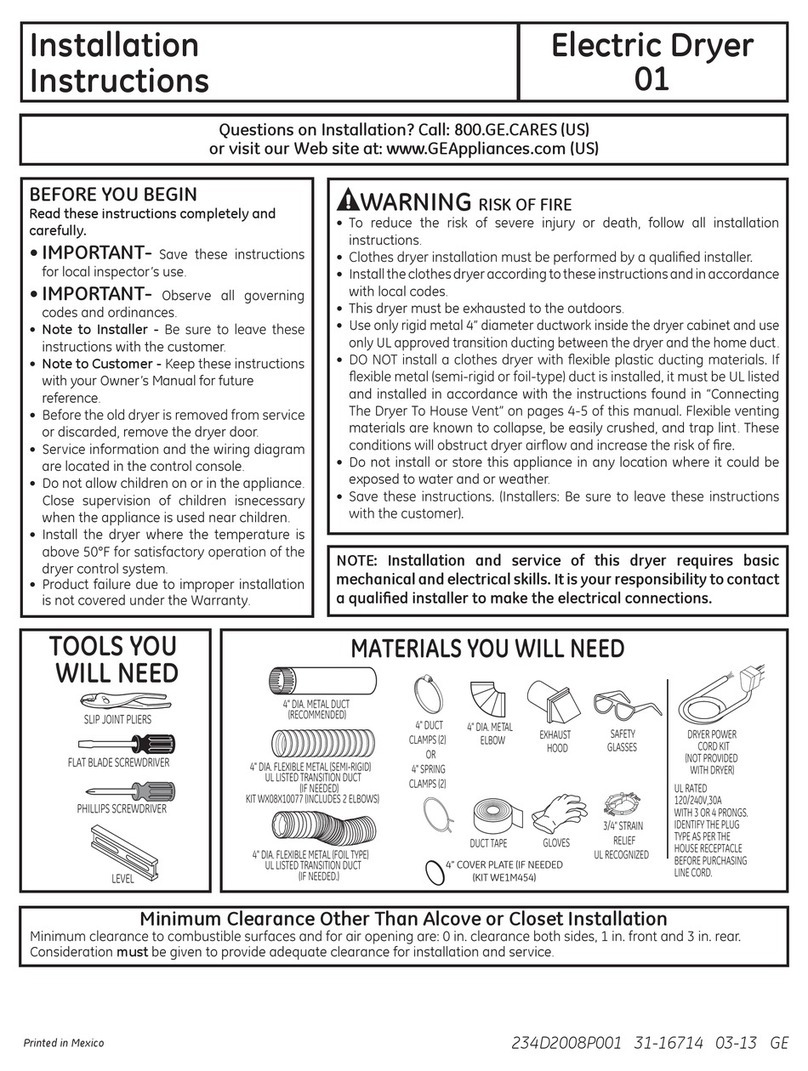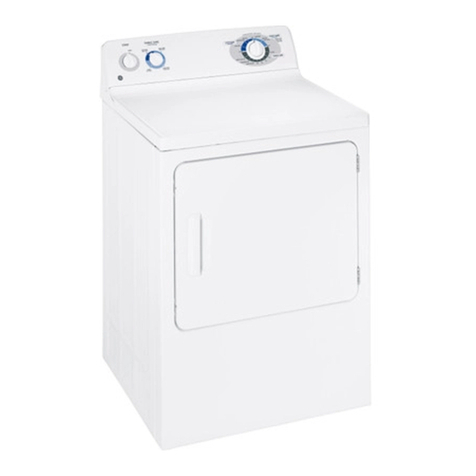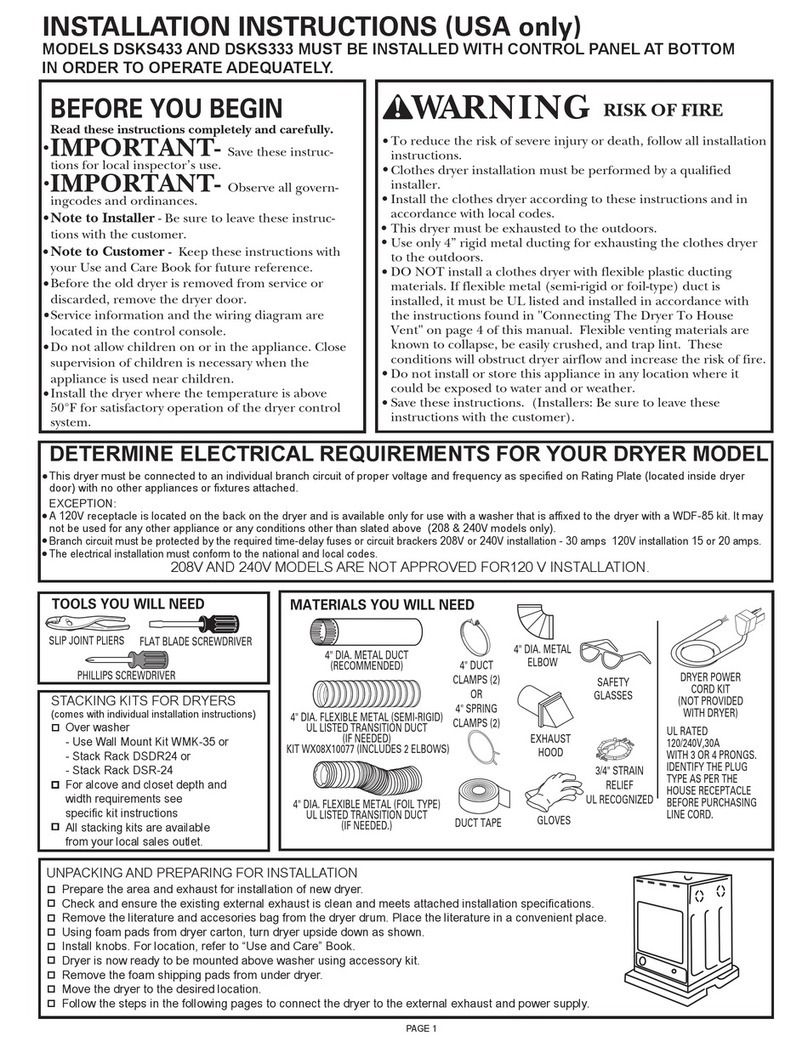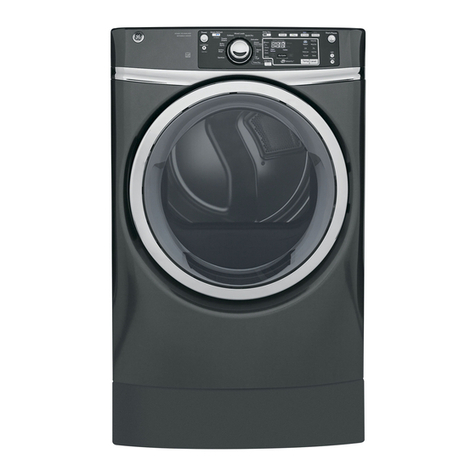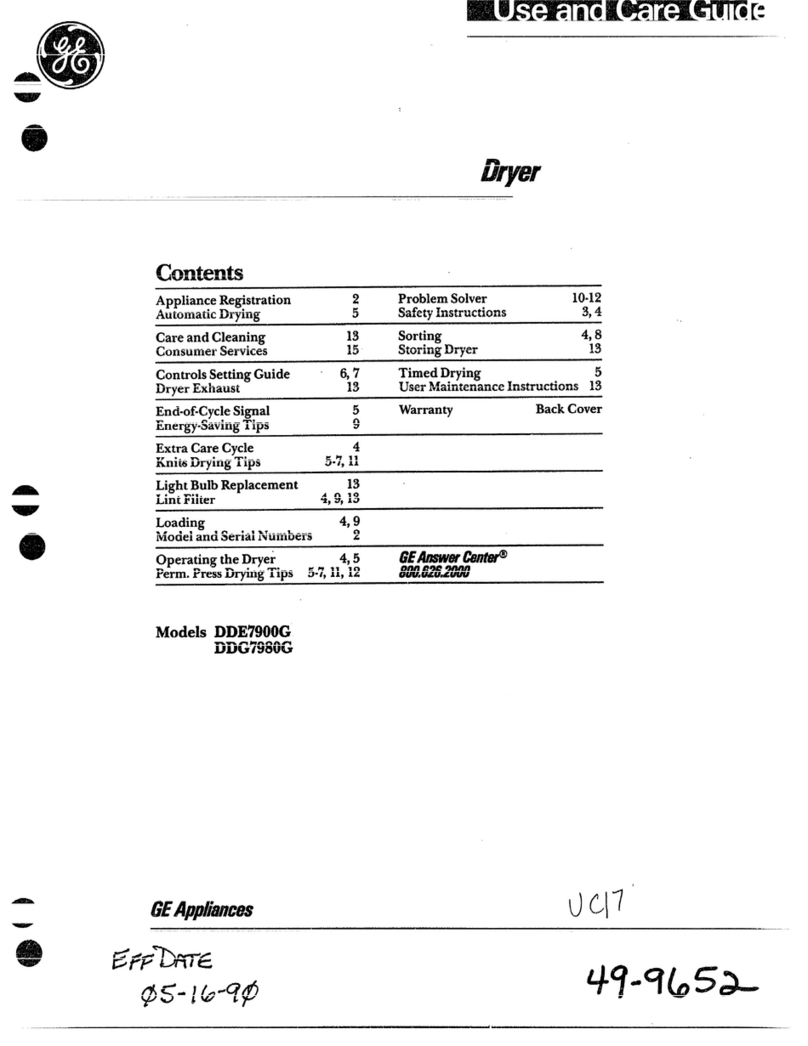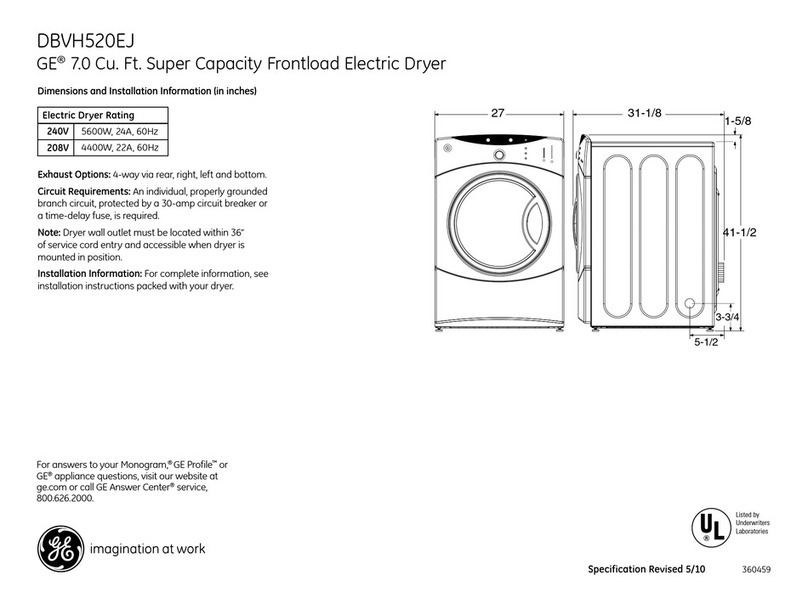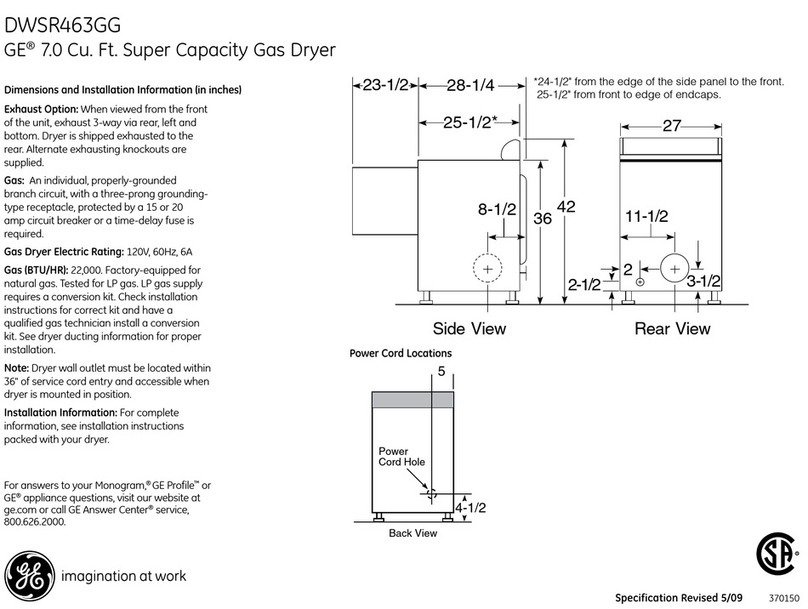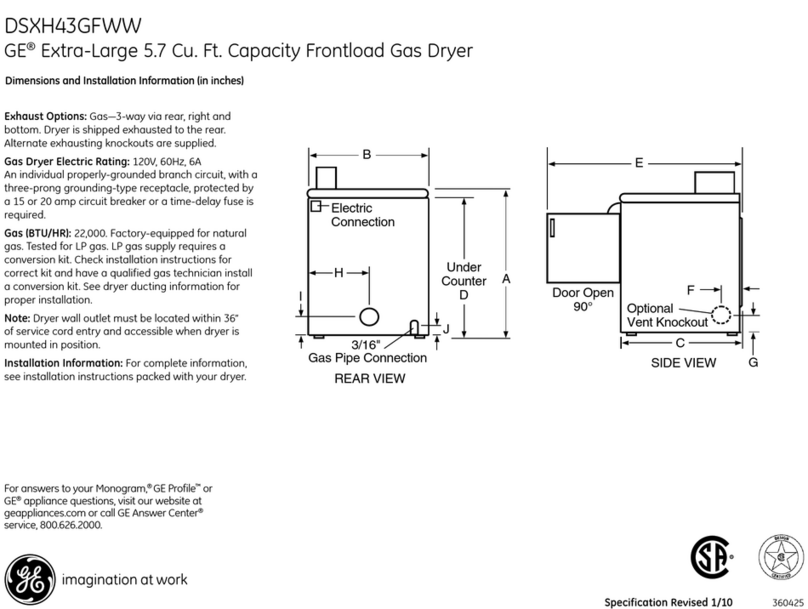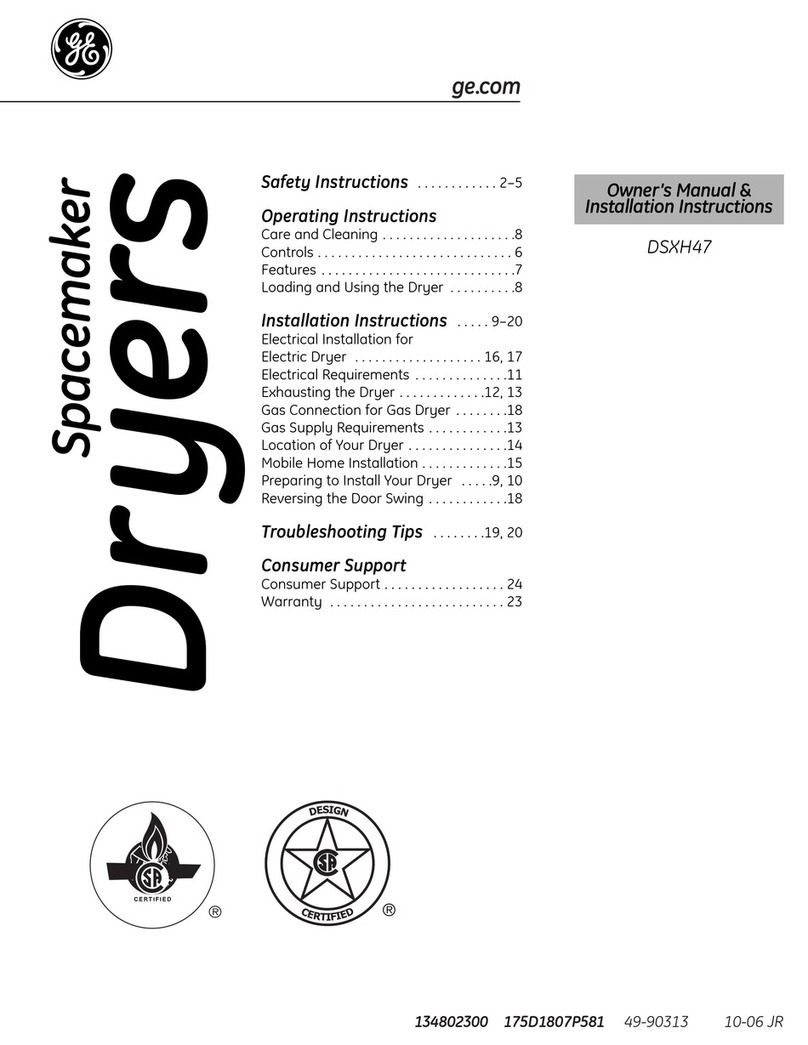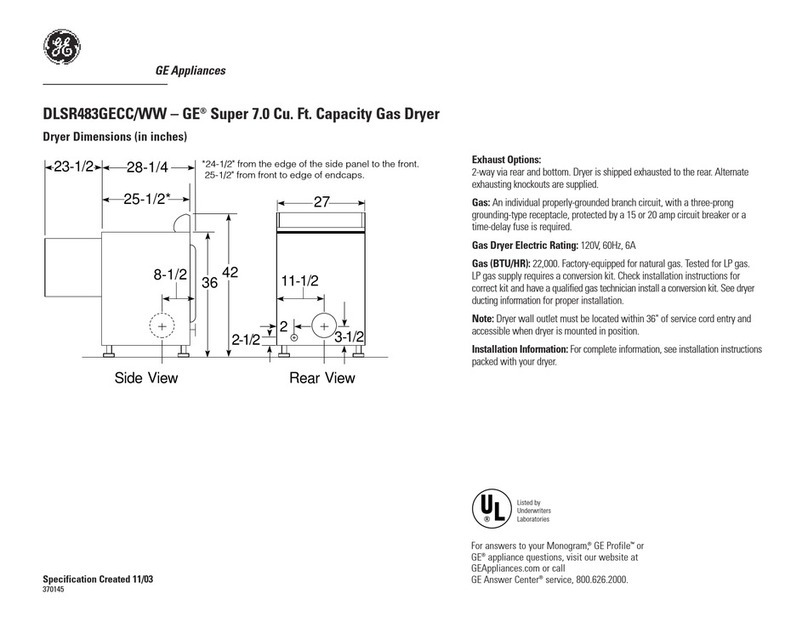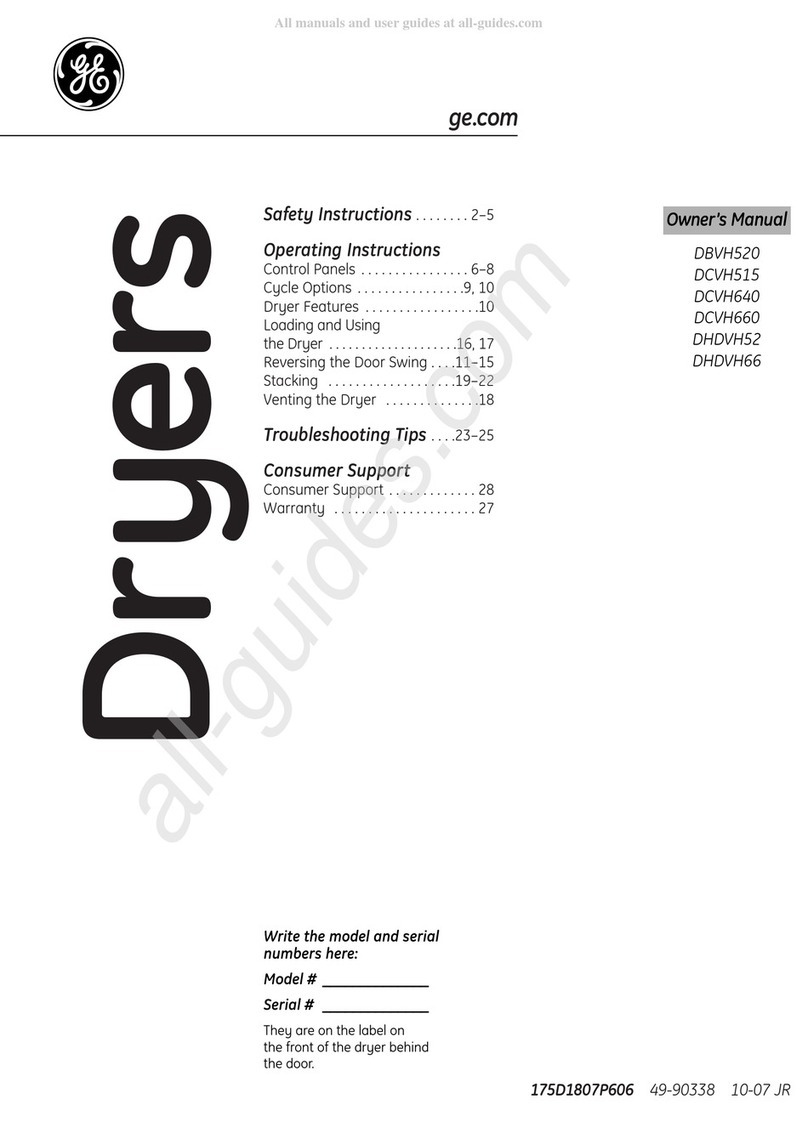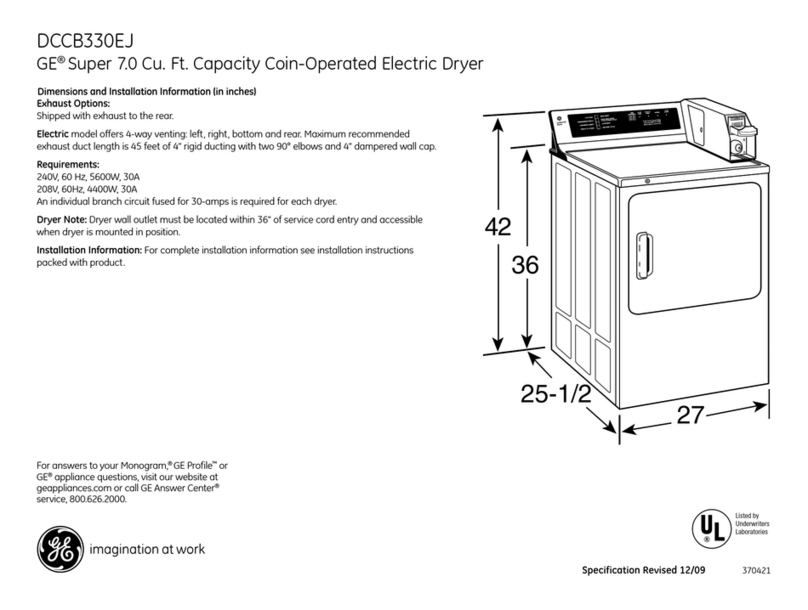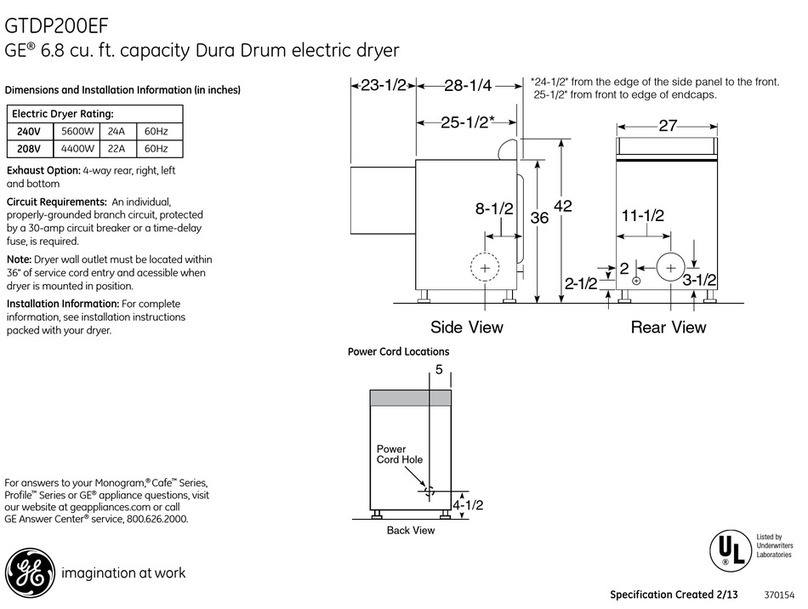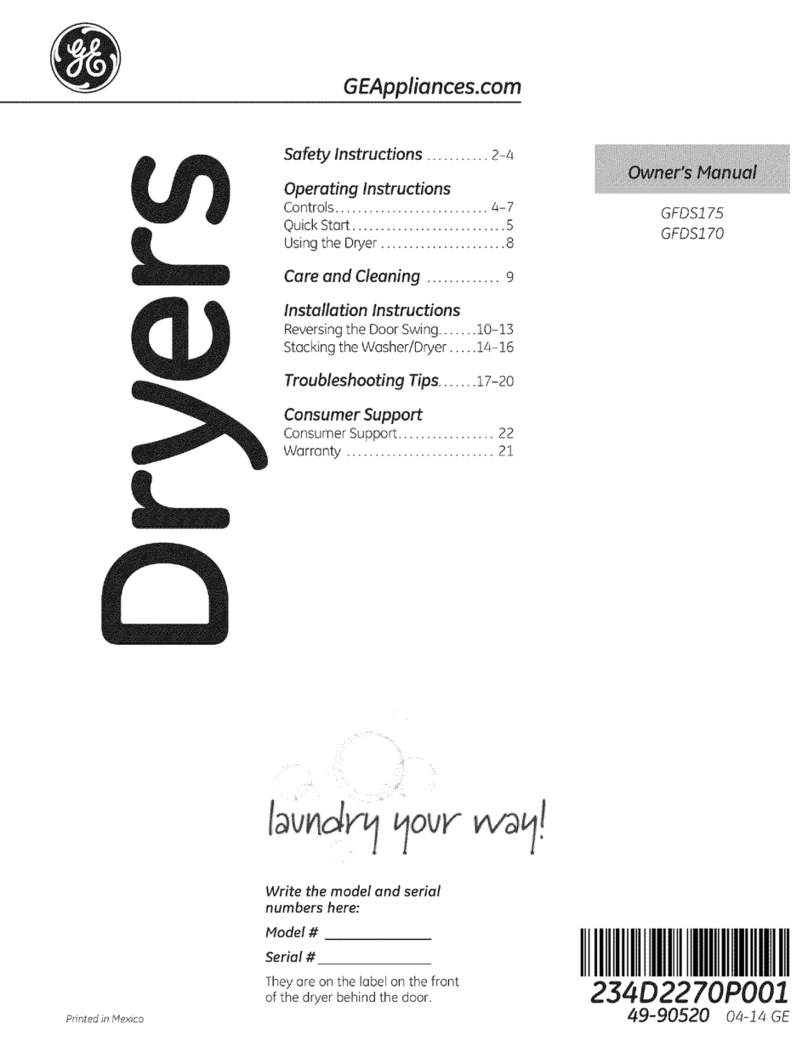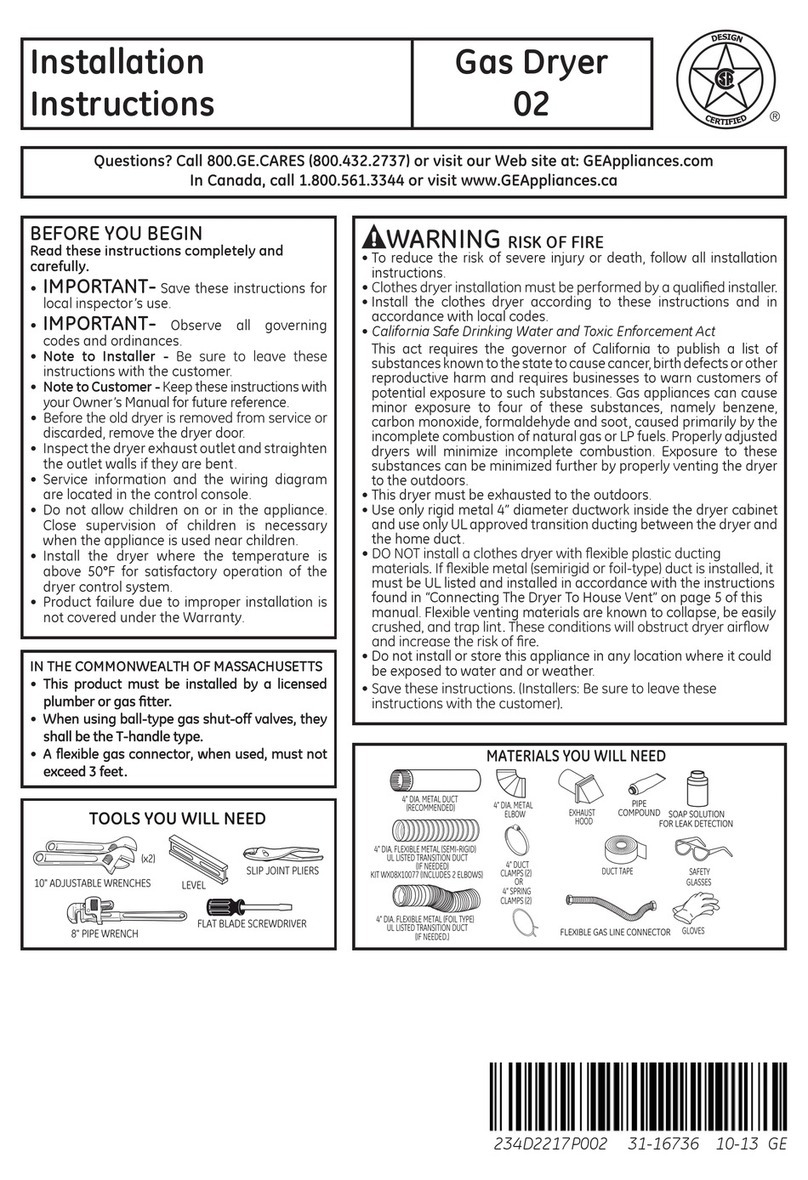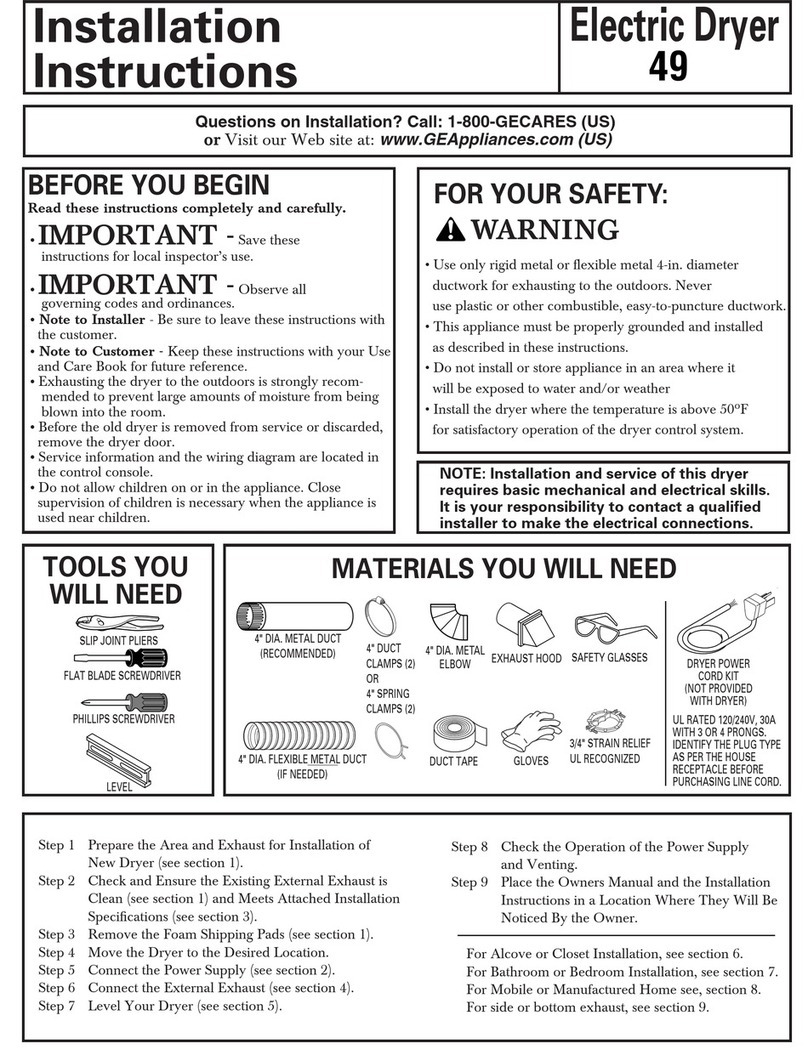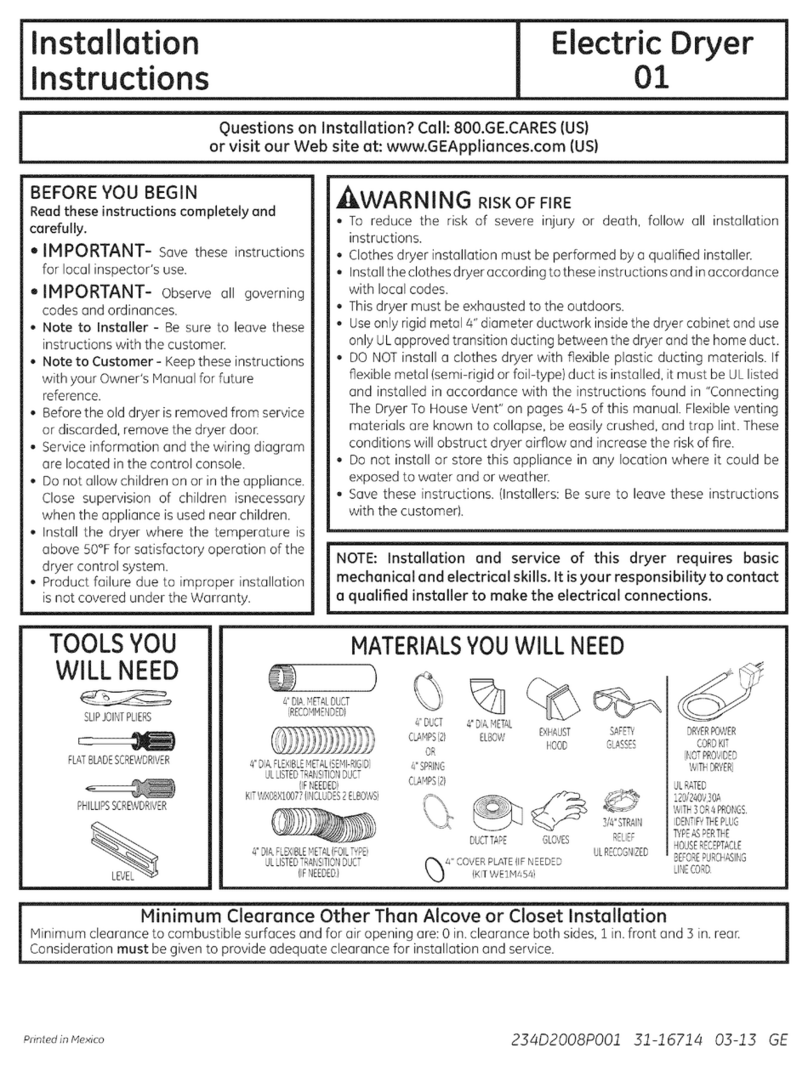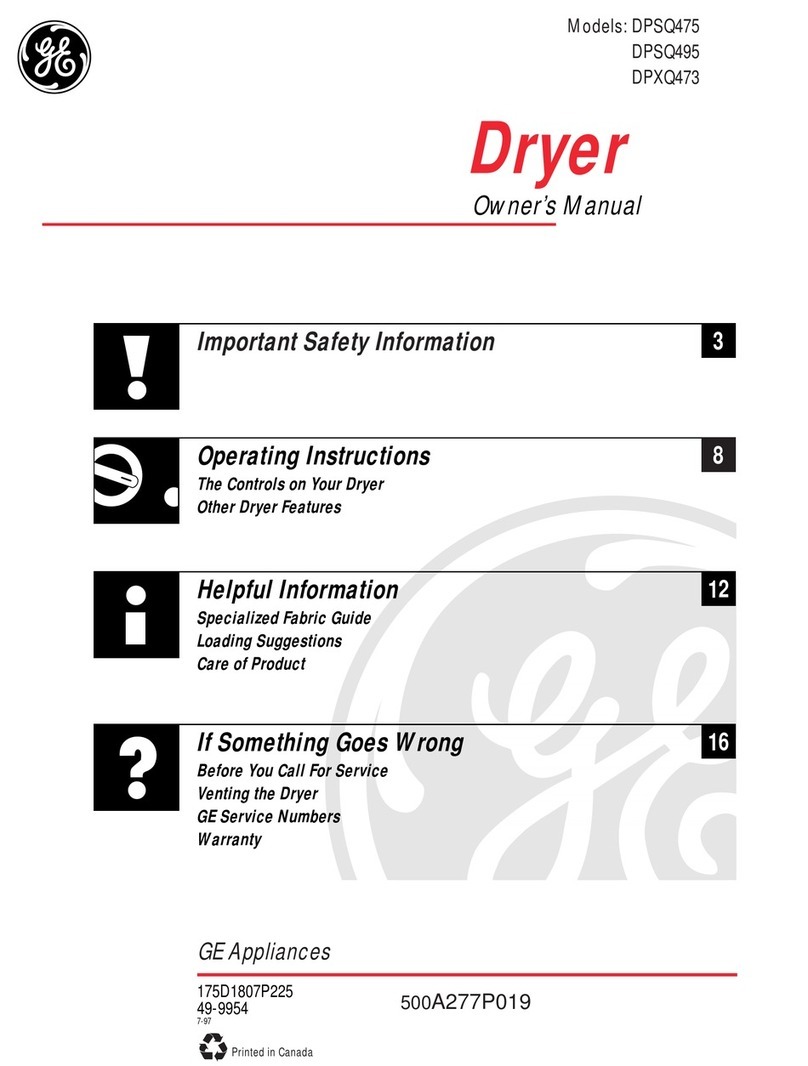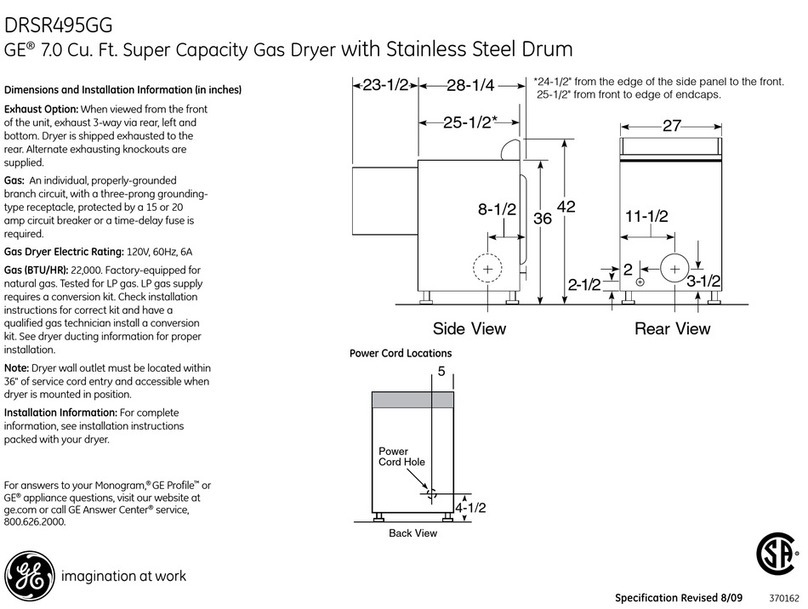3
Consumer Supportroubleshooting ipsOperating InstructionsSafety Instructions
ge.com
YOUR LAUNDRY AREA
■Keep t e area underneat and around your
appliances free of combustible materials
(lint, paper, rags, etc.), gasoline, c emicals
and ot er flammable vapors and liquids.
■Keep t e floor around your appliances clean
and dry to reduce t e possibility of slipping.
■Close supervision is necessary if t is appliance
is used near c ildren. Do not allow c ildren to
play
on, wit or inside t is or any ot er appliance.
■Keep all laundry aids (suc as detergents, bleac es,
etc.) out of t e reac of c ildren, preferably in a
locked cabinet. Observe all warnings on container
labels to avoid injury.
■Never climb on or stand on t e dryer top.
WHEN USING YOUR DRYER
■Never reac into t e dryer w ile t e drum is
moving. Before loading, unloading or adding
clot es, wait until t e drum as completely
stopped.
■Clean t e lint filter before eac load to prevent
lint accumulation inside t e dryer or in t e room.
DO NO OPERA E HE DRYER WI HOU
HE LIN FIL ER IN PLACE.
■Do not was or dry articles t at ave been
cleaned in, was ed in, soaked in or spotted
wit combustible or explosive substances (suc as
wax, oil, paint, gasoline, degreasers, dry-cleaning
solvents, kerosene, etc.). T ese substances give off
vapors t at may ignite or explode. Do not add
t ese substances to t e was water. Do not use or
place t ese substances around your was er or
dryer during operation.
■Do not place items exposed to cooking oils in your
dryer. Items contaminated wit cooking oils may
contribute to a c emical reaction t at could cause
a clot es load to catc fire
.
■Any article on w ic you ave used a cleaning
solvent or t at contains flammable materials (suc
as cleaning clot s, mops, towels used in beauty
salons, restaurants or barber s ops, etc.) must not
be placed in or near t e dryer. T ere are many
ig ly flammable items used in omes suc as
acetone, denatured alco ol, gasoline, kerosene,
some ouse old cleaners, some spot removers,
turpentines, waxes, wax removers and products
containing petroleum distillates.
■T e laundry process can reduce t e flame
retardancy of fabrics. To avoid suc a result,
carefully follow t e garment manufacturer’s
care instructions.
■Do not dry articles containing rubber, plastic, foam
or similar materials suc as padded bras, tennis
s oes, galos es, bat mats, rugs, bibs, baby pants,
plastic bags, pillows, etc., t at may melt or burn.
Some rubber materials, w en eated, can under
certain circumstances produce fire by
spontaneous combustion.
■Do not store plastic, paper or clot ing t at may
burn or melt on top of t e dryer during operation.
■Garments labeled Dry Away from Heat or Do Not
Tumble Dry (suc as life jackets containing Kapok)
must not be put in your dryer.
■Do not dry fiberglass articles in your dryer.
Skin irritation could result from t e remaining
particles t at may be picked up by clot ing during
subsequent dryer uses.
■To minimize t e possibility of electric s ock, unplug
t is appliance from t e power supply or disconnect
t e dryer at t e ouse old distribution panel by
removing t e fuse or switc ing off t e circuit
breaker before attempting any maintenance or
cleaning (except t e removal and cleaning of t e
lint filter). NO E: Turning t e Cycle Selector knob
to an off position, or pressing PAUSE does NO
disconnect t e appliance from t e power supply.
WARNING!






